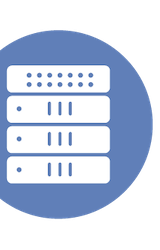Mike Preston got to hear from Rubrik twice at Field Day events, including a very early appearance at Virtualization Day back in 2015. Now he’s going to get a much closer look after accepting a role with the company in their Technical Marketing team. We’re excited to see what’s in store for Mike in this self-proclaimed Chapter 2. Best of luck!
DriveScale Releases Customer-Driven Advancements in Fall Edition of its SCI Platform
James Green inititally heard about DriveScale’s innovation with Software Composable Infrastructure and storage disaggregation at Tech Field Day in 2016. In this post, he reviews their “Fall Edition” update, which adds a new HDFS plugin, QuickCluster, and easier cluster scaling.
DriveScale Now Supports Kubernetes and Docker
DriveScale is all about disaggregating storage. James Green saw them at Tech Field Day a few years ago, and reviews their latest update. Their FlexVolume allows you to bring this same disaggregation to Docker and other containers in Kubernetes. James runs down the major features of the plugin in this post.
Docker – State of the Nation (aka Observations of a Brit)
Alex Galbraith reflects on the influence of Docker, a post originally began after their Tech Field Day presentation from November. He’s recently seen the change in perception from an OS-centric view of the world to a more services oriented approach from a number of people. it seems that year of Docker hype are becoming a reality. Alex cites the increasing desire for organizations to automate code deployment pipelines and overall platform security as some of the more prevalent reasons for the switch.
New Career Adventure — Joined Rubrik
While we’re sad she won’t be joining any more Tech Field Day events as a delegate, we’re happy to see Rebecca Fitzhugh took on a technical marketing role with Rubrik! Look forward to more of her excellent writing specifically focused on the company. Congratulations Rebecca! If you need to catch up on Rubrik’s latest and greatest, make sure to check out their Tech Field Day videos embedded in the post.
Scale-Out Doesn’t Just Mean Applications
Alex Galbraith reflects on what he saw from Rubrik at Tech Field Day in November. He thinks their approach to backups is an example of the new paradigm of enterprise IT. It’s natively a scale-out solution, not a legacy scale-up solution that has artificial limits and has to have scale tacked on as business grows. This is something of the consumerization of IT, Rubrik’s backup solution just works and scales to your needs, allowing you to rely on it more and worry about it less.
Building Data Storage With Containers
The state of containers in enterprise IT continues to expand. As it does, the importance of addressing storage for these stateless constructs becomes more important. Chris Evans reviews why addressing container storage is essential, and some of the solutions out there. This includes offerings from StorageOS, Portworx, and Scality. Ethan sees containers continuing the trend started with hyperconverged infrastructure, the blurring of storage and application.
What Capabilities are Needed for a Startup Storage Company?
Eric Shanks seems impressed by StorageOS. The company presented at Tech Field Day this past November, and presented their distributed container storage solution. While their idea is fascinating in itself, their storage controller is itself a 40MB container image, Eric really likes how feature rich it is. While other products that have been on the market longer still have a long roadmap to implement a lot of enterprise essential features, StorageOS seems a lot more fully baked. Impressive considering they haven’t been offering a commercial product for very long!
Backups suck, rubrik does not
John White knows the pain of being a backup engineer. At an old job, the problems came down to two simple issues, software and hardware. You know, minor issues. Seeing what Rubrik presented at Tech Field Day in November, John likes what they offer as a solution for local backups. Built on the back of their Atlas file system with a clean graphical user interface, John thinks it offers a compelling package for any organization that can’t do backups with a service provider.
2016 between container, hyper-convergence, cloud and bigdata
Did you bite a poison apple and fall into a deep sleep for most of 2016? Then Lino Telera has the catchup post for you. He has a comprehensive look at what transpired in tech last year. He starts by touching on the consumer space, with a move to portability and lower power requirements. He then moves on to cover the major moves from VMware, the implications of cloud native applications, the state of SAN in the enterprise, containerization, and the Internet of Things. If you were in a mystical sleep for the year, you might want to check on some of the other news, but Lino has you covered for enterprise tech!
Cohesity – a secondary storage leader in the making?
Max Mortillaro reviews what he saw from Cohesity at Tech Field Day this past November. He really seems to think their holistic focus on secondary storage could provide for major cost savings in an enterprise. Their dedupe abilities seem to really be able to reduce your secondary storage data footprint. With 80% of storage coming from disparate secondary sources, Cohesity seems designed to wrangle it all in one manageable interface.
Here’s to 2016 (A year in the life…)
Jon Hildebrand shares his reflections on 2016. For him, it was a year of growth. He shares his thoughts on how 2015 ended on a bit of a downer, feeling a little bit reticent to contribute in discussions at Virtualization Field Day. For 2016, he decided to make some changes. He set about making friends through VMUGs and getting involved in the community, including speaking at two UserCons. Gaining confidence with this engagement, Jon had a much more productive time, attending three total Tech Field Day events in the coming year. It was great to see Jon at events during the year, and we’re glad to help make 2016 a year of growth for him!
2016 – How did I do?
It’s one thing to make New Year’s Resolutions, it’s another thing to follow up on them the next year. Matt Crape looks back at 2016 to see how he did with his resolutions from last year. Overall, he accomplished one of the three goals he set out for himself. But for that goal of better community involvement, Matt really knocked it out of the park! He earned a VMCE certification, presented at a vBrownBag Tech Talk, hosted a Veeam user group, and attended Tech Field Day in November! For 2017, Matt wants to stay involved with the vCommunity. If that’s his only resolution for the New Year, it looks like Matt has a good chance of going one for one in 2017.
Docker? On Windows? Yep!
Jon Hildebrand uses the native Windows support for Docker to talk about the sea change Microsoft has experienced recently. Once synonymous with lock-in, the company is now meeting their customers and developers where they are, rather than forcing a change in behavior. Jon is particularly excited to see the two different versions of Windows available to Docker images. Of the two, the Nano Server versions seems the more intriguing, as it strips out most legacy support for a truly lean instance.
Secondary Storage is Cohesity’s Primary Goal
It says something about Cohesity that they’ve energized a lot of Tech Field Day delegates. After all, their solution is about secondary storage, which might ordinarily be relegated to an afterthought. But Tim Smith appreciates their focus. He puts in succinctly at the end of his piece: All too often, vendors forget that not all data is created equal, and thus should not be treated equally. It’s a really great point and one that Cohesity takes to heart. Their hardware and storage platforms are designed from the ground up to address the specific needs of secondary storage. This encompasses not just backups, but all data not actively used in production. It’s a huge swath of data that’s just waiting to be property leveraged. Tim thinks Cohesity has developed a way to do this.
Cohesity – DataPlatform in the Cloud
Josh De Jong takes a look at what Cohesity presented at Tech Field Day. While still a relatively new company, Josh thinks they have an interesting solution for secondary storage. This includes not just backup, but all data that isn’t in active production. Cohesity can eliminate a lot of storage bottlenecks by moving test/dev instances off of primary storage, and use their SSD based cache to speed up the process. Josh also liked Cohesity’s DataPlatform CE, which can back up your VMs in cloud native formats. Overall, while not all of their feautures are novel to the platform, they seem to have a robust solution for secondary storage.
Pets, Cattle and Cabbage, oh my! DriveScale Brings Scale-Out to Tech Field Day 12
Gene Banman, CEO of DriveScale, put up a blog post reviewing the company’s Tech Field Day presentation last month. Overall, the event generated a lot of social media buzz around their disaggregated storage solution. Make sure to check out all the great posts from our delegates for their takes on what DriveScale presented, as well as the other presenting companies at the event.
Time to bring back the middleman
Tim Smith reconsiders the idea of a middleman. The term hardly has a positive connotation, generally a derogatory term for someone imposed by bureaucracy. But with DriveScale, Tim sees something different. He sees their disaggregated approach to hardware as liberating storage from compute, particularly useful for scaling Hadoop clusters. Overall, he seems pretty bullish on their agile solution.
Container Hardening with Docker Bench for Security
Security for virtual machines has some well established protocols. But as containers continue to infiltrate the data center, what are the best security practices? Docker released a behemoth security documents, but at over 200 pages, not a lot of IT professionals have the time to ingest it in a timely fashion. Luckily, James Green wrote up a little walkthrough on how to run their “Docker Bench of Security” tool. This reviews your Docker configuration for common security holes, and is a must for any Docker deployments. James breaks down how to install, run, and interpret the tool and its findings.
Is Everything Pay-as-You-Go?
Eric Shanks reviews the solution he saw from Igneous Systems. He’s intrigued by what they are offering on a technical level. Overall, he considers if what they are offering is so much pay-as-you-go, or if they simply offering forward looking provisioning. Regardless, it’s well worth the read for Eric’s thoughts.








